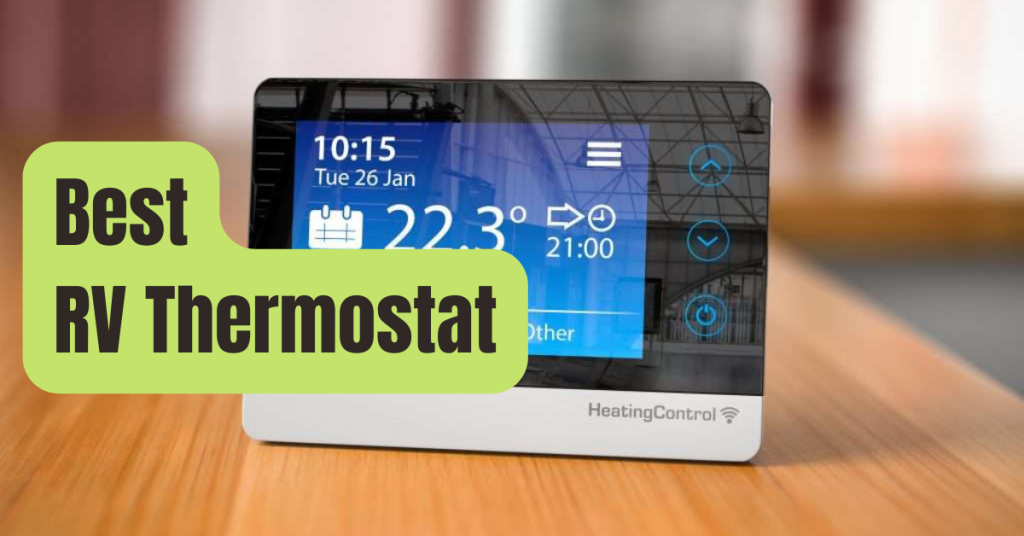Do you have furnace issues with your Suburban RV? If so, it’s critical to find a solution as soon as you can.
Particularly if you’re camping in a cold region, a broken furnace might cause serious issues like frozen pipes.
Fortunately, you don’t need to wait for a professional to arrive—there are things you can do right now to get your furnace working again.
Without further ado, let’s dive further into how to diagnose problems with your RV furnace and stay warm no matter the weather.
Suburban RV Furnaces: Who Makes Them?
Suburban was first founded in 1947 as a producer of space heaters.
Soon after, they began to manufacture cooktops, water heaters, RV heaters, and other products.
They quickly established a superb reputation for quality and excellence, and they continue to produce these goods in the city where Suburban was established more than 70 years ago.
However, Airxcel, one of the biggest producers in the RV sector today, purchased Suburban in 1998.
As a result, Suburban joined the Airxcel family of brands along with Dicor, Coleman-March, Maxxair, Aqua-hot, and many more.
Since then, it has maintained its viability.
Remember: Before troubleshooting your furnace, ask yourself these questions to make the process easier.
What Country Produces Suburban Furnaces?
Amazingly, Suburban still manufactures furnaces in Dayton, Tennessee, where it was founded.
One of the area’s biggest employers, the corporation today runs a 300,000 square foot manufacturing complex.
The firm, according to Suburban’s website, boasts a dedication to employee empowerment, community engagement, and ongoing expansion.
Fixing Problems With Your Suburban RV Furnace
So, how do you repair the furnace on a Suburban RV? You must first identify the problem’s origin.
Start by doing these actions.
#1. Verify the Power
To begin with, confirm that your Suburban RV heater is truly getting power from your power source.
A voltmeter may be used to do this.
You may often access the furnace from within its enclosure via a door or grill.
Simply connect your voltmeter to the cables coming from the furnace’s power supply after you’ve located a reliable access point.
You can tell the problem is with the furnace itself and not its power source if the meter indicates that electricity is flowing to the furnace.
#2. Examine The Intake For Debris And Dirt.
There won’t be enough airflow to enable the Suburban RV furnace to operate correctly if too much dirt and debris become trapped in the intake.
It’s crucial to inspect this duct and get rid of any dust or debris that may have gotten stuck there.
You never know; a family of mice could have settled within your furnace, and getting rid of them might just need a thorough cleaning.

Pro Tip: Is a furnace really necessary in an RV? Find out by reading this article!
#3. Verify the Fan
Has the noise from your furnace increased recently? Or maybe very little air is being produced by your furnace.
If so, the fan might be at fault.
You must remove the furnace from its metal container in order to inspect the fan.
Through the access door or by removing the back panel’s screws, you may do this.
Finding the wheel that contains the fan will be possible after the actual furnace has been made visible (across from the duct).
Your furnace won’t be able to effectively pump hot air down the duct into your RV if the fan is broken or blocked and unable to spin.

#4. The Thermostat, Please
Your Suburban RV furnace receives instructions to switch on from the thermostat, therefore the issue may very likely be with this crucial piece of machinery.
In fact, if the motor doesn’t switch on when it should, that is a certain indication that there is a problem with the thermostat.
Of course, there are other potential causes for this (such as an issue with the control board or the motor itself).
To identify the precise reason, we may need to employ the method of elimination.
#5. Verify the Motor
It’s likely that the engine in your furnace is just worn out.
The furnace may not start or may make a screaming sound while operating as symptoms of a bad motor.
Remove the motor from the container it is located in next to the fan to inspect its condition.
Your motor may need to be completely replaced if the shaft feels loose.
#6. Verify the Relay
The time delay relay may be malfunctioning if you hear clicking but the fan doesn’t turn on.
However, because newer furnaces won’t have a relay wire, this only applies to RV furnaces manufactured before 2001.
The wire that takes electricity from the ON/OFF switch and permits it to flow to the motor is the time delay relay.
Your engine won’t get the electricity it needs to turn on if the relay wire is broken.
Use a voltmeter to determine which components are getting electricity and which ones aren’t to determine the location of the electrical problem.
The relay wire is to fault if the control board is getting power but the motor isn’t.

#7. Examine the Control Board.
The control board may be the problem if you’ve looked at all of the aforementioned parts and are still unable to identify the cause of the issue.
This is particularly true if the control board is receiving electricity but the furnace in your Suburban RV is still not operating.
Fortunately, changing the control board is not that difficult.
Here is a great video that demonstrates how to set up the new panel.










